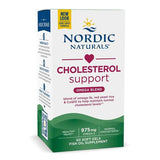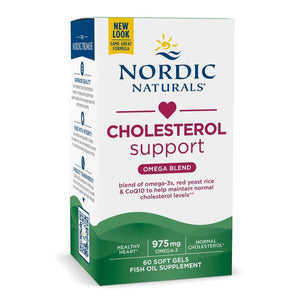
 Instagram
Instagram
Durum Wheat: How Does It Differ from Whole Wheat?

Related products
Durum wheat stands apart in the extensive family of grains due to its unique properties and health benefits. One of the hardest varieties, it originates from durum grasses, which produce a vibrant, golden grain. Durum wheat is a primary ingredient for pasta production worldwide, which contributes significantly to global food culture.
The difference between durum and whole wheat begins with their texture and ends with variations in nutritional profile. Durum has a higher protein content than typical wheat for bread making, providing an impressive palette of nutritionally vital elements like dietary fibre and various minerals.
Statistics from the FAO (Food Agriculture Organization) reveal that Italy—renowned globally for its gourmet pasta—consumes roughly three million metric tons annually. This signifies not only international culinary preference but potential health implications as well since diet profoundly impacts human wellness levels.
To highlight some key advantages associated with incorporating more durums into daily meals, they contain abundant nutraceutical compounds such as lutein, which is effective against age-related macular degeneration and deteriorating eye-sight gradually over time. Despite low-fat content, overall composition promotes the heart by maintaining balanced cholesterol, reducing hypertension risks owing to an excellent source of bioavailable antioxidants critical for combating harmful free radicals.
What Is Durum Wheat?
Durum wheat is a variety of hard, high-protein content wheat that belongs to Triticum durum species. Originating from the Latin term 'durum', which translates as 'hard', this form of whole grain claims its name due to the strong and resilient nature of its kernels.
A rich golden hue distinguishes durum wheat visually, making it an attractive choice in food preparation. Its unique amber colour results from the elevated concentration of carotenoids, plant pigments responsible for giving fruits and vegetables their bright colours. This suggests nutritional significance within dietary inclusion.
Praised globally as a primary ingredient for pasta production, semolina flour made from milled durums is preferred by chefs worldwide when crafting traditional Italian pasta or couscous, which is predominantly used across North African cuisines. The reason rests on its characteristic toughness, which enables doughs to maintain structure integrity during cooking processes, reducing risks of overcooking and unfavourable sogginess.
What is Whole Wheat?
Whole wheat refers to a grain that includes all three parts of the original kernel - bran, germ and endosperm. This comprehensive representation in composition sets it apart from refined versions where only endosperm survives processing phases.
The bran layer accounts for fibre content, while the germ carries key vitamins, minerals, and essential fatty acids. Lastly, substantial carbohydrate reserves and protein elements primarily reside within nutritious microcosms, exuding multiple health benefits.
Commonly utilised in bread baking, its lighter, softer texture gives rise to fluffy loaves adored worldwide. The food sector holds a significant place in artisanal home bakeries alike, giving leeway to creative explorations in pastry confectionery craft.
Health Benefits Of Durum Wheat

Durum wheat, owing to its rich nutrient profile and high protein content, offers an array of health benefits:
- High-Protein Profile: Durum grain outranks others in terms of its protein content, making it an appealing choice for anyone focusing on plant-based diets or aiming to increase overall dietary protein intake. Consumption contributes significantly towards meeting recommended daily allowances, catering to the body's need for essential building block components. Consequently, it aids in muscle tissue repair growth
- Promotes Digestive Health: The high fibre content is attributed to improving the regularity of digestion. It adds the necessary bulk diet, thereby facilitating smoother bowel movements. This can be particularly beneficial to people who experience frequent constipation issues. Overall, it continuously aids in maintaining healthy gut flora and critical optimum gastrointestinal functioning
- Balanced Blood Sugar Levels: Dietary fibres present within are known to slow down the absorption of sugar into the bloodstream. The slower release of sugars helps prevent sudden spikes and dips in blood glucose levels - thus plays a crucial role in diabetes management by supporting balanced glycemic responses
- Heart-Friendly Grain: Given a naturally low-fat profile, often considered heart-friendly, the addition of considerable amounts of dietary fibre aids in balancing cholesterol levels and lowers bad LDL while increasing good HDL. Collectively, these factors contribute to reducing hypertension risks, which promotes overall cardiovascular wellness
- Encourages Weight Loss Regimes: Consuming foods rich in fibre tends to create a sense of fullness lasting over longer periods, potentially curbing excessive eating habits. Such effect, when combined with consistent physical activity and a well-balanced nutrition plan, might foster effective weight loss control
- Delivers Essential Minerals & Vitamins: Whole grains, including durums, offer valuable minerals like iron, magnesium, and zinc important considering their pivotal roles in numerous bodily functions, From assisting oxygen transport to energy production and strengthening the immune system to bone health, a mineral-packed profile serves a wide array of needs At the same time, presence of various vitamin B forms supports cellular activities nutrient metabolism cognitive function enhancing nervous system performance.
- Antioxidant Benefits: As an abundant source, Lutein is a vital antioxidant compound that enables protection against age-related macular degeneration conditions where sharp central vision needs reading, driving slowly decreases. Ophthalmology research fields across Europe and North America have shown regular intake of durum wheat-rich lutein contributes to the maintenance of overall eye health.
Nutrition
The nutritional details for a 100 grams serving of durum wheat:
Proteins: Durum provides approximately 13g of protein - significantly higher than many other grains.
Fibre: It contains about 10g of dietary fibre, which aids digestion and promotes feelings of fullness, which can help in weight management strategies.
Minerals: The mineral content shows around 3mg iron, which is beneficial for blood health; roughly 170 mg magnesium, essential for nerve-muscle functions; and almost ¨5 mg zinc, which boosts immune responses.
Vitamins: Vitamins contain nearly 0.45 mg of thiamine (B1), which is crucial for nervous system function.
Durum Wheat vs. Whole Wheat?

Similarities
While durum and whole wheat each have unique properties, their similarities are equally noteworthy. Both grains share a fundamental structure comprising three primary components: bran, germ, and endosperm. These integral parts contribute to delivering an expansive nutrient profile that includes dietary fibres, essential minerals, and B-complex vitamins.
In terms of health benefits these nutritionally rich kernels provide, both types promote digestive regularity while maintaining balanced blood sugar levels due to their high fibre content. Their low-fat characteristics also make them heart-friendly food choices – highlighting another shared trait contributing positively towards consumer wellness goals.
From a culinary perspective, they find common ground in semolina or bread form by being utilised predominantly for flour production across various global cuisines, demonstrating versatility within gastronomic applications.
Thus, depicting a continuum between two extended nutritional levels adds to the dynamic dimension of industry usage, showcasing manifold offerings challenging the conventional perception of uniform grain existence instead of presenting spectrum options that cater to a vast range of personal preferences and dietary needs.
Difference
Though durum wheat and whole wheat belong to the same cereal family, they exhibit distinguishable differences in texture, nutritional profile, and end-usage.
The first notable difference between durum and typical whole grains is their hardness. Durum is one of the most complex types of wheat, which contributes significantly towards its distinguishing characteristics, particularly in culinary applications. On the contrary, the softer nature commonly associated with wheat enables a wider variety, notably bread-baking bread-baking spheres.
The distinct higher protein content sets it apart from other varieties in terms of nutritional properties. Interestingly, dietary fibre levels both offer excellent digestive health support. Yet, angle mineral vitamins remain slightly superior owing to the richness of iron, zinc, and magnesium and a larger presence of B vitamins.
There is a particular distinction visible when evaluating staple foods across various cultures. Golden-coloured, firm-textured durums are primarily utilised in producing semolina flour, which is used internationally for pasta couscous. By contrast, milder-textured durums find a common purpose inside bakeries for loaf production, and they have light, fluffy characteristics much favoured by general consumers globally.
Hence, despite shared heritage, tables have unique advantages that make them specialties. Different food landscapes cater to varying individual preferences and diversified wellness goals.
Frequently Asked Questions
What is the difference between durum wheat and whole wheat?
Durum wheat differs from whole wheat primarily in texture, nutritional profile and end-use. Durum is tougher with higher protein content and is used largely for pasta production, while whole wheat, being softer, finds use in bread baking.
What is the difference between spring wheat and durum wheat?
Spring wheat varies from durum based on seasonal growth patterns and gluten properties. Spring varieties planted at colder times yield flour perfect for bread making due to its high-gluten content. In contrast, durums prefer warmer planting seasons, creating strong semolina-suitable pasta.
What is the durum wheat explanation?
In essence, durum wheat is a tough grain known notably for its hard kernels and rich golden colour. It's classified as the highest protein wheat and is the choice ingredient for globally renowned Italian pasta and North African couscous.
How is whole wheat different?
Whole wheat refers to grains maintaining original kernel integrity – bran germ endosperm during milling - capturing a comprehensive nutrient spectrum. Unlike refined counterparts, it presents denser textures beautifully crafted into soft loaves or used artful pastries confectioneries. Home baker chefs favour versatility within culinary creations worldwide.
Why is durum wheat special?
The speciality of durum lies in its inherently robust nature, which allows resilient doughs that maintain structure to withstand potential overcooking. This, coupled with impressive nutrition gains such as abundant proteins and vital minerals, makes it an attractive food inclusion in global cuisines.
What is the other name for durum wheat?
Another name often associated with 'durum' is Macaroni Wheat, reflecting the ubiquitous cultural history of beloved Italian pasta.
Bottom Line
Durum and whole wheat, while both members of the Triticum family, have notable differences in texture, nutritional profile, and culinary usage. Durum is a tough grain rich in protein that's used globally for pasta production due to its resilience when cooked. Whole wheat offers various essential nutrients, making it perfect for bread baking because of its softer nature. Despite these differences, they share significant similarities, such as having a bran germ endosperm structure that provides nutritious fibre linked to digestive regularity and balanced blood sugar levels. Both low-fat compositions make them heart-friendly. All this reflects their versatility within kitchen pantries across the world, catering to vast dietary goals and culinary pursuits.





















 Rated Excellent by 26,523+ Reviews
Rated Excellent by 26,523+ Reviews